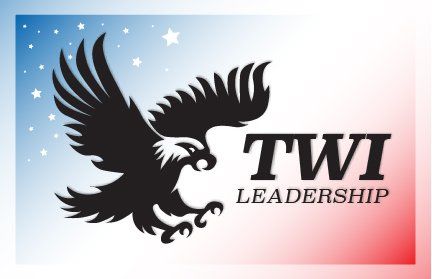Job Safety
Job Safety
Course by TWI Leadership at your Facility
OVERVIEW
Workplace accidents can harm workers, families, the employer and its entire workforce, as well as damage facilities and equipment, increase scrap and downtime, and much more. Job Safety Training (JS) is an accident-preventing methodology based on a simple and logical framework centered on analysis of potential accident causes and possible countermeasures.
The central model of the JS program is the accident chain. Causes and events leading up to an accident are interlocked like the links of a chain, or, an "accident chain" and the supervisor’s job is to break the chain. Through both classroom exercises and examples brought in by your staff, the accident chain model is used to "map out" the problems on the board for analysis and application of the Job Safety "Four Step Method." Indirect and direct causes of personal injury and/or property damages are examined in order to create countermeasures that are enforceable and measured for success.
The combination of classroom training and on-site implementation enhances knowledge retention through a "learn-by-doing" methodology. Key to the Job Safety program is a workplace inspection, during which all participants visit the worksites of two trainees. These two participants lead the group through their areas to apply the Job Safety methodology to their work, not only inspecting equipment and machines, but observing employees’ capabilities, mental and physical state, work attitude, use of protective gear, handling of tools, etc.
Lastly, Job Safety emphasizes the vital role of leadership and the different types of supervisory styles. Supervisors are taught to examine the possibility that the supervisor himself or herself might be the very cause of a possible accident.
PROJECT OBJECTIVES
- Train supervisors in how to effectively prevent accidents
- Decrease incident rates, accidents, and injuries
- Improve safety records and inspection results
- Increase staff morale
- Decrease downtime
LOGISTICS
JS consists of five sessions in five consecutive days for a maximum of ten participants. All sessions are two hours. Additional time for practical application will be expected of the participants to practice their new knowledge in the workplace both alone and with the facilitator.
- Overview of five necessary skills of good managers
- Foundations for good relations
- Develop the "Individual" Chart
- Define what a "Problem" is
- Introduce the Four Step Method for Job Relations
- Identify how and why problems occur
- Review Four Step Method using Case Study
- Facts vs. feelings and opinion
- Class review of two participants current workplace problems
- Class review of how they applied the Four Step Method to reinforce
- Review Four Step Method
- Case Study to practice the Four Step Method
- Class review of three participants current workplace problems
- Class review of how they applied the Four Step Method to reinforce class learning
- Case Study to practice the Four Step Method
- The effect of change in the workplace
- Class review of three participants current workplace problems
- Class review of how they applied the Four Step Method to reinforce class learning
- Class review of remaining participants current workplace problems
- Class review of how they applied the Four Step Method to reinforce class learning
- Review of the Job Relations Card
- Review of how to identify opinions vs. feelings
- Discuss manager relationships
- Gain acceptance and conviction of the method
Don't have a large enough group to host at your location?
Join an open session!
Purchase a course ticket and be on your way to becoming a better leader.
QUICK LINKS
© 2021 TWI Leadership Solutions, LLC | Powered by Flypaper | All Rights Reserved | Privacy Policy

